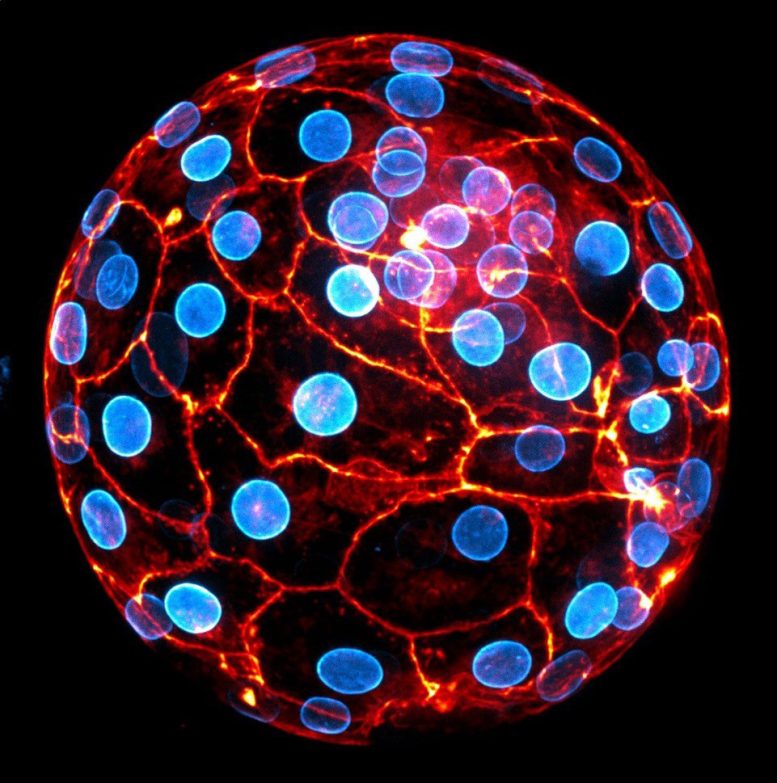
Human embryo at the blastocyst stage ready to implant. The nuclear envelope of the cells appears in blue and the actin cytoskeleton in orange. Credit: Julie Firmin et Jean-Léon Maître
A breakthrough study by the Institut Curie reveals that embryonic cell compaction in humans is caused by cell contraction, offering new insights to enhance assisted reproductive technology success rates.
In human development, the compaction of embryonic cells is a vital process in the early stages of an embryo’s formation. Four days post-fertilization, the cells tighten together, helping to form the embryo’s initial structure. If compaction is flawed, it can hinder the development of the essential structure needed for the embryo to attach to the uterus. During assisted reproductive technology (ART), this stage is meticulously observed before the embryo is implanted.
An interdisciplinary research team led by scientists at the Genetics and Developmental Biology Unit at the Institut Curie (CNRS/Inserm/Institut Curie) studying the mechanisms at play in this still little-known phenomenon has made a surprising discovery: human embryo compaction is driven by the contraction of embryonic cells. Compaction problems are therefore due to faulty contractility in these cells, and not a lack of adhesion between them, as was previously assumed. This mechanism had already been identified in flies, zebrafish, and mice, but is a first in humans.
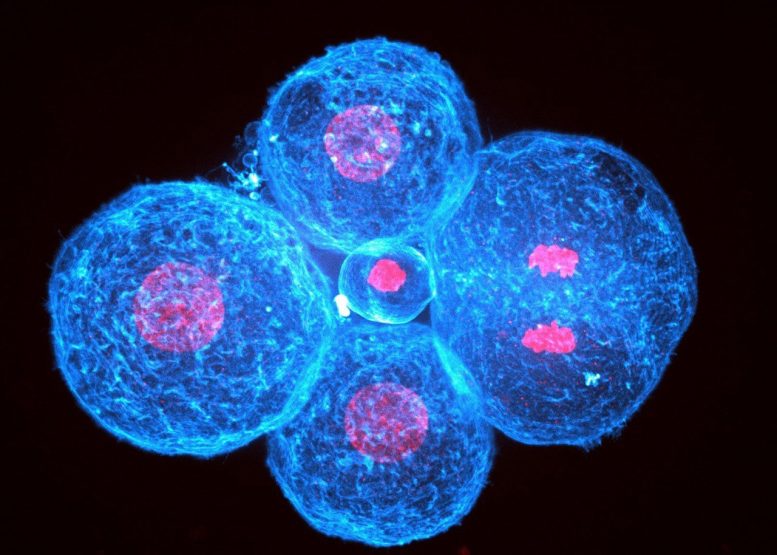
Human embryo at the 4-cell stage. Cell DNA appears in red and their actin cytoskeleton in blue. The cell on the right has just split its genome into two and is about to divide. Credit: Julie Firmin et Jean-Léon Maître
By improving our understanding of the early stages of human embryonic development, the research team hopes to contribute to the refinement of ART as nearly one-third of inseminations are unsuccessful today.
The results were obtained by mapping cell surface tensions in human embryonic cells. The scientists also tested the effects of inhibiting contractility and cell adhesion and analyzed the mechanical signature of embryonic cells with defective contractility.
Reference: “Mechanics of human embryo compaction” by Julie Firmin, Nicolas Ecker, Diane Rivet Danon, Özge Özgüç, Virginie Barraud Lange, Hervé Turlier, Catherine Patrat and Jean-Léon Maître, 1 May 2024, Nature.
DOI: 10.1038/s41586-024-07351-x


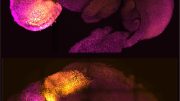


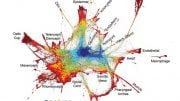

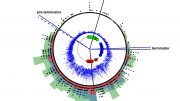

Be the first to comment on "The Contractile Forces of Life: New Discovery Reshapes Our Understanding of Embryo Formation"